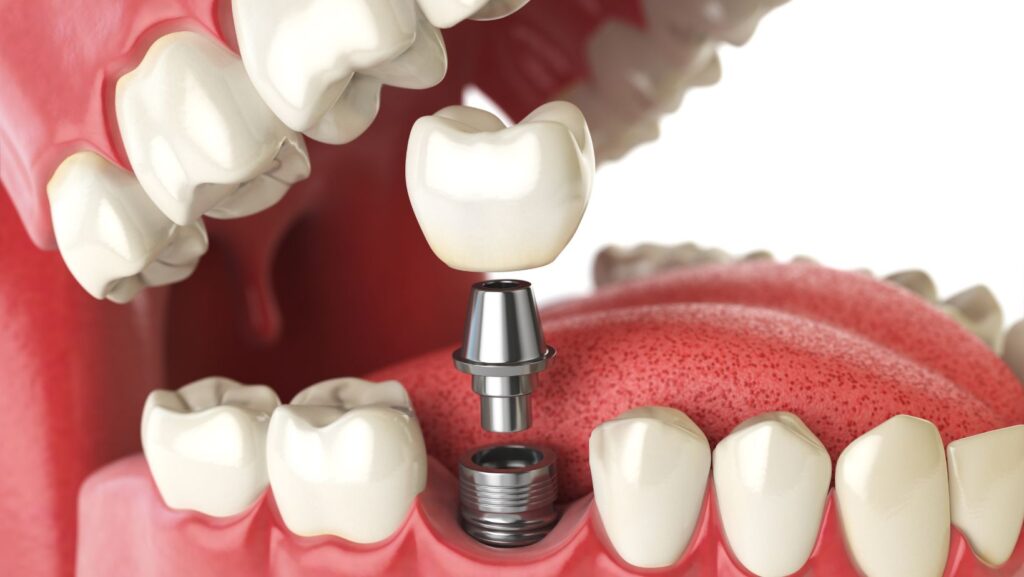Facts About Endosteal Implants

Endosteal implants are a cornerstone of modern dental restoration, offering a durable and effective solution for those looking to replace missing teeth. Unlike other dental prosthetics, endosteal implants are surgically placed directly into the jawbone, serving as a robust foundation for artificial teeth. This method not only helps maintain jaw structure but also enhances overall oral functionality and aesthetic appearance.
In this article, we shall dive deep into what endosteal implants are, explore their key benefits, and walk through the surgical procedures involved in their placement. Other than that, we aim to provide a comprehensive overview of why these implants are increasingly preferred in dental restorations, helping you to understand their importance and the transformative influence they can have on everyday dental health.
What Are Endosteal Implants?
Endosteal implants are a popular and effective solution in modern dentistry for replacing missing teeth. They are small, typically screw-shaped devices made from biocompatible materials like titanium, which is known for its durability and compatibility with human bone. These implants are surgically inserted right into the jawbone, where they act as a sturdy anchor for artificial teeth like crowns, bridges, or dentures.
The table below pinpoints the main components and features of endosteal implants:
| Component | Description |
| Material | Typically made from titanium, it is known for its strength and compatibility with body tissues. |
| Shape | Most commonly shaped like screws to maximize surface area for bone attachment and stability. |
| Placement | Surgically inserted into the jawbone, where they undergo a process called osseointegration. |
| Purpose | Act as a firm foundation for artificial teeth, such as crowns, bridges, or dentures. |
| Osseointegration | The procedure by which the implant merges with the jawbone provides long-term stability. |
Key Benefits of Choosing Endosteal Implants
Endosteal implants often stand out as a top option for dental restorations. They are integral in helping patients recover not only the functionality of lost teeth but also in maintaining the structural integrity of their jawbone.
| Benefit | Description |
| Durability | Made from titanium, endosteal implants are robust and designed to last many years under proper care. |
| Bone Preservation | They stimulate bone growth, preventing the deterioration that often follows tooth loss. |
| Stability | The secure integration into the jawbone ensures that prosthetics mounted on the implants function effectively, resembling natural teeth behavior. |
| Aesthetic Quality | They closely mimic real teeth, improving not just the functionality but also the visual appeal of one’s smile. |
| No Adjacent Teeth Damage | They do not require altering surrounding teeth, preserving the natural tooth structure elsewhere in the mouth. |
The Surgical Procedure for Placing Endosteal Implants
The surgical procedure for placing endosteal implants involves several precise steps designed to ensure the implant is securely and effectively integrated into the jawbone.

This procedure is usually completed under local anesthesia or sedation to enhance patient comfort.
To help you gain further clarity, here is an in-depth look at each step:
- Initial Consultation and Planning: g: The first step involves a thorough examination of the patient’s oral and overall health. This includes dental X-rays and, often, 3D imaging to assess bone quality and determine the optimal placement of the implant. The dentist will also consider the patient’s medical history to avoid any potential complications.
- Preparation of the Site: On the day of the surgery, the specific area where the implant is to be placed is numbed. An incision is done in the gum tissue to access the underlying bone, preparing the site for implant placement.
- Drilling the Bone: Once the bone is exposed, a specialized drill is used to create a space within the jawbone. This step must be done carefully to circumvent damaging vital components such as nerves and blood vessels and to precisely accommodate the implant.
- Placing the Implant: The titanium implant is then placed in the prepared hole in the jawbone. The precision of this placement is critical for the stability of the implant and its ability to bear the load of a tooth replacement.
- Closing the Site: After the implant is in place, the gum tissue is sutured back together over the implant site. In some cases, a temporary healing cap is placed over the implant to protect it while it integrates with the bone.

- Healing and Osseointegration: The healing process can take several months, during which the bone grows around the implant in a process called osseointegration. This is crucial as it provides the strength and stability needed to support tooth restoration.
- Final Restoration: Once the implant has completely integrated with the bone, a second minor procedure might be performed to attach an abutment, which will hold the crown or other dental prosthetic. Finally, the artificial tooth is placed, completing the restoration.
The Bottom Line
In summary, endosteal implants represent a significant advancement in dental technology, offering a reliable, long-term solution for replacing missing teeth. They are not only beneficial for oral health but also improve the overall quality of life by enhancing your smile and the functionality of your teeth.
Understanding the process and benefits of endosteal implants can help you make an informed decision about whether they are the right choice for your dental needs. If you are contemplating dental implants, speak with your dentist to evaluate your options and figure out the best course of action for your specific situation. With the right preparation and care, endosteal implants can provide a comfortable, durable, and effective solution for many years to come.
Check out this dentist in Port Charlotte FL to get started with a consultation and determine if endosteal implants are the right solution for you. A professional evaluation will provide personalized recommendations and guide you through the process for a healthier, more confident smile.

 Hiking for Mental Health: The Healing Power of Trails
Hiking for Mental Health: The Healing Power of Trails  Diet vs. Lifestyle Change: Knowing the Difference
Diet vs. Lifestyle Change: Knowing the Difference  Sleep Like a Pro: 10 Tips Backed by Science for a Restful Night
Sleep Like a Pro: 10 Tips Backed by Science for a Restful Night  How 7Stax 7-OHMZ Tablets Support Mental Health: 7 Key Benefits
How 7Stax 7-OHMZ Tablets Support Mental Health: 7 Key Benefits  The Complications That Could Arise From Using Cytotec to Induce Labor
The Complications That Could Arise From Using Cytotec to Induce Labor  The Impact of Workplace Stress on Anxiety and Depression
The Impact of Workplace Stress on Anxiety and Depression